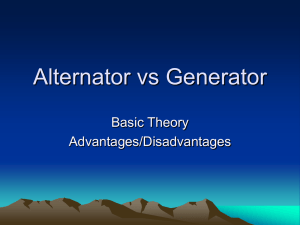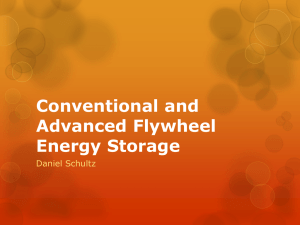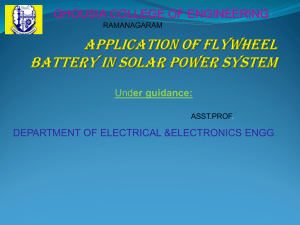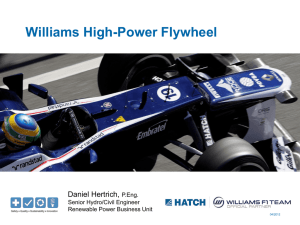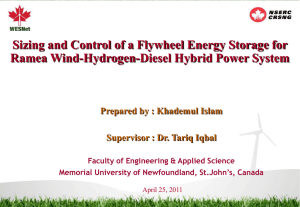You can our final presentation here
advertisement
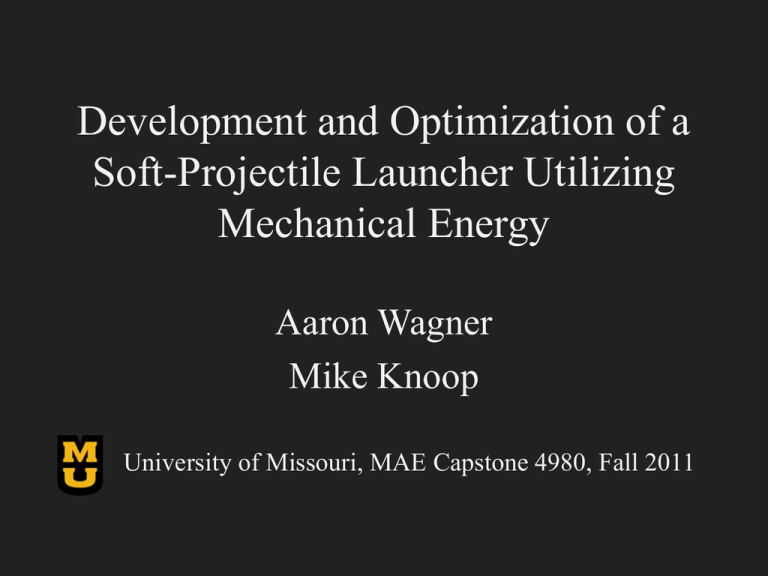
Development and Optimization of a Soft-Projectile Launcher Utilizing Mechanical Energy Aaron Wagner Mike Knoop University of Missouri, MAE Capstone 4980, Fall 2011 Defining the Problem Consumers modify blasters to increase power Increasing power decreases performance Goal of this capstone group 1. Verify if adding rotation to darts improves flight characteristics 2. Develop and optimize a design to maximize performance Defining Performance a) Distance b) Shot Grouping c) Consistency of (a) and (b) Increased Effective Range Safety Cost Weight Durability of System Absolute Importance Relative Importance Current Competitors Technical Difficulty Target Value Units 9 9 9 9 6 9 9 9 1 1 39 11 5 5 a $ 45 13 1 3 RPM 45 13 2 3 7.7* m 45 13 2 4 b cm 39 11 5 5 9 3 45 13 5 5 27 8 4 5 69 19 2 4 40 m/s 3 4 4 3 3 354 5 4 4 3 3 Notes a Less than $200 b 22.6±12.3 * This value is expected to change once adjustments are made to account for improvements resulting from the copper breach. Improvement Ratio Customer Importance Current Competitors Muzzle Velocity Mass of System Non Custom Parts Weight of soft projectile Shot Grouping Distance Traveled RPM of Soft Projectile Cost of Manufacture Quality Function Deployment 1.7 1 1 1 1 Design Strategy: Iteration Designing the Initial Prototype Design inspiration Design Strategy: Mock Launcher Initial Prototype Concept Direction of Motion Selecting a Flywheel Rotational Velocity Measuring muzzle velocity of existing soft-projectile launcher Calculating a necessary rotational velocity 𝑉𝑡 = 𝜔 ∙ 𝑟 Vt = 30 m/s r = 3.81 cm. 𝜔 = 7500 RPM Construction and Development Failure Mode Effects Analysis "A successful FMEA activity helps a team to identify potential failure modes based on past experience " Initial Prototype Build Direction of Motion Second Prototype Build Direction of Motion Highspeed of Jamming http://www.youtube.com/watch?v=c_Mi0Bm miFc&list=PL0FF1657C0B08FAB8 Third Prototype Build Direction of Motion Highspeed of Fishtailing http://www.youtube.com/watch?v=BSyDEoXlY 4c&list=PL0FF1657C0B08FAB8 Highspeed of Single-Prong Barrel Close-up http://www.youtube.com/watch?v=87Y0A6IMJ M8&list=PL0FF1657C0B08FAB8 Barrel Iteration Highspeed of Double-Prong Barrel Close-up http://www.youtube.com/watch?v=f1uctE_u4 qk&list=PL0FF1657C0B08FAB8 Final Prototype Build Direction of Motion Testing and Optimization Parameters to Optimize Flywheel rotation angle Flywheel gap distance Foam darts with high rotational velocities are less-able to self-correct! 1250 RPM High tip-off Actually self-corrects 5000 RPM Little apparent tip-off Actually fishtails 1250 RPM Barrel Close-up http://www.youtube.com/watch?v=9cDyEDYO w7E&list=PL0FF1657C0B08FAB8 5000 RPM Barrel Close-up http://www.youtube.com/watch?v=wBaZM7owLc&list=PL0FF1657C0B08FAB8 Selecting a Flywheel Rotational Velocity Selecting a Flywheel Gap Distance Distance Traveled (ft) 50.0 40.0 30.0 20.0 10.0 0.0 0.50 0.46 0.42 0.38 0.33 Distance Between Wheels (in) 0.29 Does Rotational Velocity Help? Distance +4.6 ft. (14%) 6 4 2 0 Distance (ft) Neutral Angled 50 47.5 45 Standard Deviation 25 27.5 30 32.5 35 37.5 40 42.5 Number of Occurences Yes -2.3 ft. (40%) Future Work • Precision machining • Foam dart wear • Integrating into an existing SPL Final Thoughts • Iteration is very important • Pick a project which motivates you • Relevance, Market Size Acknowledgments Humans vs. Zombies Mizzou for project funding Brian Graybill for teaching us SolidWorks Dr. El Giz-awy for Capstone guidance Richard Oberto for fixing the highspeed camera! Questions and Feedback (or should we just test fire of our final design?)



